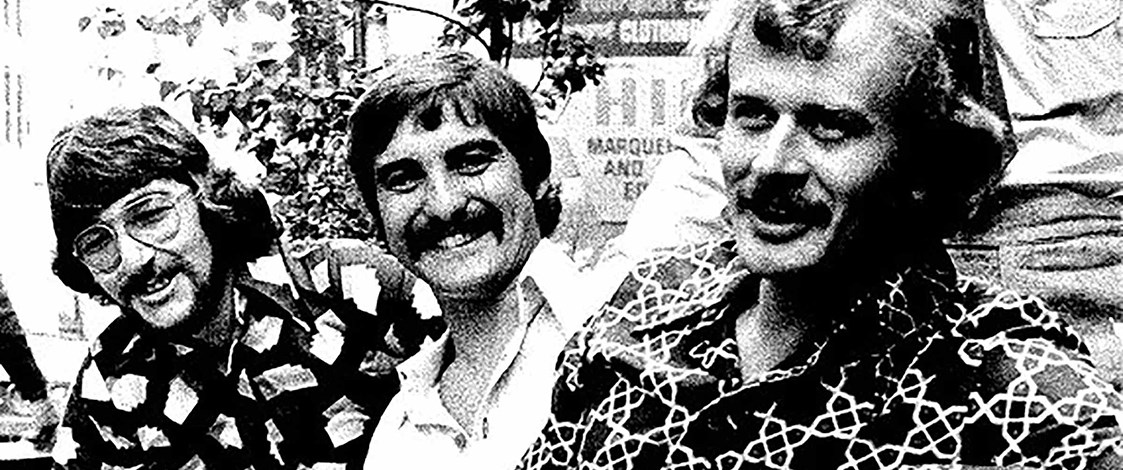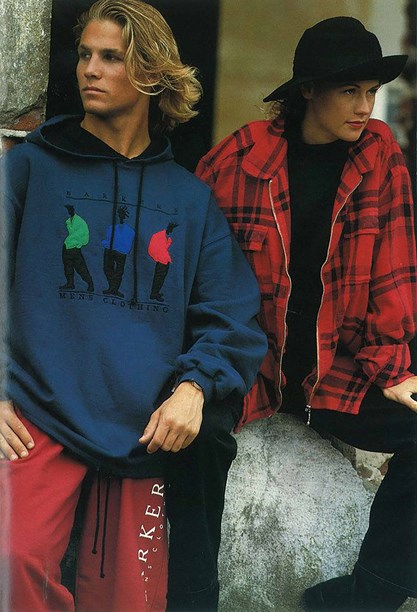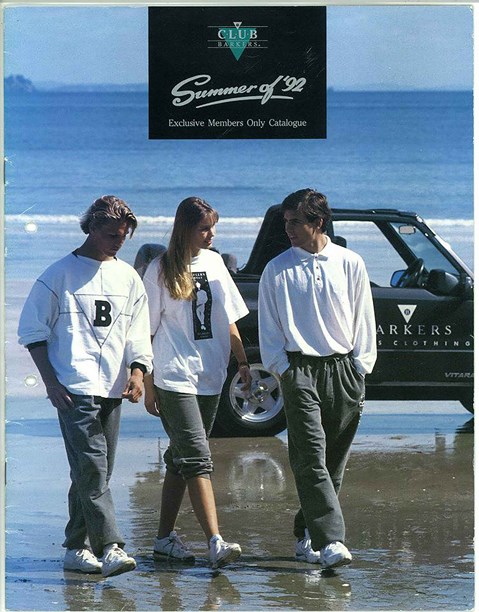Stories
Barkers
1972-

Raymond Barker is the man, and the name, behind the iconic men’s clothing label that began in Auckland in 1972. From the moment Ray opened his first store, Raymond’s, on the corner of Victoria and High Streets, it was obvious just how successful the business was going to be.
When the store opened, it was an instant hit and it became a hangout for style-obsessed young men. The Auckland menswear retail market was well-serviced – Duncan Greive wrote in 2012 feature that the market was saturated. "There were 36 specialist menswear retailers in the central city alone, and the scene was ferocious from the first. Even before he opened his doors competitors tried to chop his business off at the knees."
The competition threatened suppliers and wholesalers that if they were to do business with Ray, they would cancel their orders with those suppliers (Greive 2012). Fortunately, rather than being put off, the suppliers saw something in Ray that gave them the confidence that he was going to give it his best shot. "It helped that he had one of the best salespeople in the city, a handsome, charismatic 18-year-old named Jeff Parsonson who would eventually buy in and become Ray’s business partner."
At this time, it was typical for retail stores to be stocked by New Zealand’s major manufacturers, but Ray was determined to create clothing under his own brand. His designs sold well and within five months, he had raised enough capital to open a second store.
Keen to expand his business, Ray opened his second store on what was known as retail central – Auckland’s Queen Street. The store originally operated under the name Collars and Cuffs. The business focused on making body shirts. "This was the early 1970s, the height of post-hippy, pre-disco excess, and figure-hugging rayon shirts, with extravagant collars were paired with very flared polyviscose trousers, most of which didn’t even have pockets lest they ruin the sleek lines" (Greive 2012).
Business for Barkers was booming. Ray’s client market began to increase and became more diverse. The store was so popular that it became increasingly difficult to keep products in stock. He moved the store to a larger site at 200 Queen Street, operating under the name Barkers for the first time. The new store fitout was inspired by the 1970s film, The Great Gatsby. It had custom theatre lights, chrome rails and a huge sound system that faced out towards Queen Street. But a large and luxurious store came with hefty rent bills. Ray was keen to extend his opening hours to maximise sales but at the time, it was against the law to trade on weekends. A conversation with the owner of Record Warehouse, Michael Dow, about how they would love to open their stores on a Saturday morning, led to a minor protest. Ray and Michael began to open on Saturday mornings and despite regular visits from the Labour Department, they received support from many businesses in the CBD. After six months, the law was changed to allow Saturday trading.
Ray and his staff would often travel overseas to keep up with the latest international trends. They would always return home with new ideas for the Barkers brand. In the early 1990s, Barkers store manager Lester Van Der Veer returned home with the idea for what was to become a clothing phenomenon throughout New Zealand. "He came back with the idea for a hooded sweat and a matching trackpant," says Ray. "That’s how it started."

Barkers were fixated on baggy, oversized clothing when the iconic Barker trackpant was designed. Image © Barkers.
The trackpant craze exploded throughout the country, selling more than 50,000 pairs of Barkers branded trackpants over the next few years. They were all manufactured by Streetwise in West Auckland. The success of the trackpant was due to the way they were advertised and marketed. "The trend was started by seeding the product not to celebrities, as is commonplace now, but to their high school equivalents. First XVs and rowing eights received Barkers trackpants and sweats custom embroidered with their school and team, and where the sporting elite went, the masses soon followed."

Barkers trackpants featured on the cover of the summer 1992 catalogue. Image © Barkers.
But the introduction of Australian retail stores to New Zealand meant that Ray had to make changes to his business. The Australian labels were usually manufactured in China which allowed them to sell their garments at a lower price than their New Zealand made equivalents. Ray had always prided himself on his commitment to New Zealand made clothing, but he eventually moved the manufacturing off shore.
Ray sold the company in 2002 due to a heart scare. After a decade of ownership changes, the business has recently returned to its roots. Managing director Jamie Whiting told Stuff.co.nz in 2012 that "Barkers has always been an aspirational, iconic New Zealand brand but I felt when I came on board it had lost its way". He has returned the company to what he describes as Ray’s original vision - classic menswear with a twist. For the new Barkers team it is about "knowing where you came from, and having a firm idea in your head as to where you are going". The brand reconnected with its history through a year-long 40th birthday in 2012. An award-winning magazine was launched, a beer brewed, a 7" single by Lawrence Arabia was pressed and the iconic logo trackpant was revived to help celebrate the occasion. Since then Barkers has regained its position within the psyche of style-obsessed New Zealand men. The brand began collaborating with like-minded New Zealand businesses, including Swanndri, Flying Nun, McKinlay’s and Surfline. Most importantly Barkers emerged with a real vision for its clothing, driven by Paul Biddle, who helped spearhead its bold new direction. While the company remained a key casual destination, suiting was re-emphasised and the brand became the formalwear supplier to the All Blacks.

A suit jacket on display at the Barkers Auckland Flagship store at 1 High Street. Image © Barkers.
Lastly the company embarked on a programme of new store fitouts, driven by retail manager Glenn Cracknell. Each of the 25 stores has its own distinct character, bringing a sense of regional idiosyncrasy to every site. A pair of vast flagships, one on Wellington’s Lambton Quay, the second on Auckland’s High Street – neatly brings Barkers back full circle, to where it began all those years ago.
Text by Moemoea Hemara. Banner image of Jeff Parsonson, Bob Adler and Raymond Barker outside Raymonds. Image © Raymond Barker.
Last published March 2015.